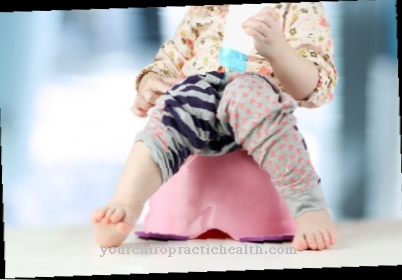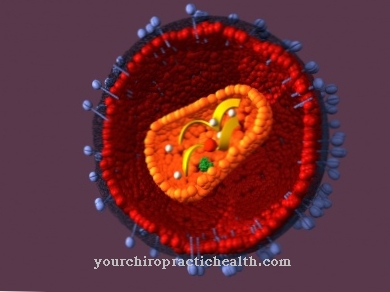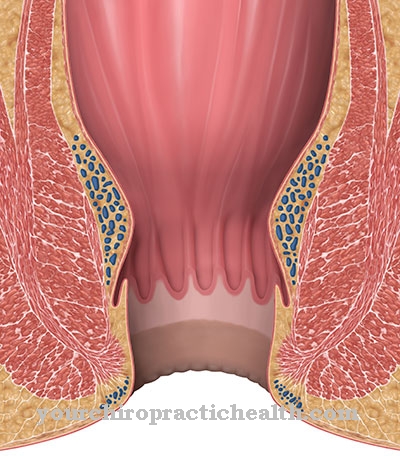Of the Clubfoot is a congenital malformation of the foot, consisting of pointed, sickle and hollow foot and bow legs. The clubfoot is clearly recognizable at birth and should be treated from the beginning. In most cases, the clubfoot can be compensated for by suitable therapy and the children can learn to walk at the right age without delay.
What is a club foot?

© Axel Kock - stock.adobe.com
As Clubfoot denotes the common occurrence of pointed, sickle and hollow feet. The foot is turned inwards so that the sole of the foot does not point down, but towards the other foot.
In addition, the foot is excessively stretched in the ankle joint and strongly arched in the sole of the foot. Clubfoot is more common in boys than in girls and can be unilateral or bilateral. Different strengths are possible. Usually children with clubfoot also have strong bow legs and stunted calf muscles on the affected leg.
causes
The causes of the formation of the Clubfoot are not yet fully explored. Usually clubfoot is congenital. It is believed that its origin is genetically determined. The fact that there is a familial accumulation strengthens the suspicion of genetic causes.
One theory that causes clubfoot to develop is that connective tissue and muscles do not develop in the proper proportion during pregnancy and bone growth is impaired. It is also believed that bone growth could stop too early, leaving the feet in the embryonic position and not developing any further.
It is also believed that if the mother smokes during pregnancy, clubfoot is more common if the patient is genetically predisposed. Other circumstances can also promote the appearance of clubfoot, such as a lack of amniotic fluid or an unfavorable position of the child in the uterus.
Symptoms, ailments & signs
The doctor recognizes a clubfoot at a glance. Mostly it is a combination of several malformations that can affect only one or both feet. If the heel bone is raised in combination with a steep position in the upper ankle, the doctor speaks of equinus. In contrast, if the lower ankle is in a pronounced O-position, it is an inwardly inclined rear foot.
In this case, the heel points inwards. If the toes and metatarsus are turned inwards, the foot is sickle, while the arch of the foot is increased in the arches of the foot. If there is no treatment, those affected can only walk on the outer edges of their feet. In very severe cases, in which the sole of the foot is pointing upwards, patients walk on the back of the foot.
While symptoms are clear in newborns, the doctor will do additional tests in unborn babies. In this way he ensures that it is actually a clubfoot and that the child has not just assumed a clubfoot position. In this context, a shortened, relatively thin calf (the so-called clubfoot calf) is a clear indication that a clubfoot is present. Ultrasound examinations also reveal clear skin folds that are not present in healthy feet.
Diagnosis & course
The malformation in one Clubfoot can be clearly seen at birth. The doctor can use various tests to determine whether there is a real clubfoot or whether it is some other deformity.
Important criteria are, for example, how much the foot is turned inwards, how well individual joints are mobile, what is the relationship between foot and calf length, how severely the calf muscles are atrophied (atrophied) or whether the blood circulation and sensitivity (the ability to feel ) of the leg and foot deviate from the norm.
Complications
If a clubfoot is not treated, the feet will stiffen in the deformity. This leads to the fact that the children walk on the outer edge of the foot instead of on the sole of the foot. An untreated clubfoot affects the whole body and causes further misalignments in the hips, spine and shoulders. The clubfoot would stiffen completely over time and cause severe pain.
Early treatment is advisable in the case of clubfoot. This way, later complications or worsening of the deformities can be minimized and the symptoms of clubfoot can be treated professionally.Often surgical interventions are necessary to give the clubfoot the best possible functionality. The sooner treatment for clubfoot begins, the sooner good results can be expected.
Complications often occur postoperatively. The clubfoot can be permanently damaged. The formation of scar tissue is a common consequence of operations. In addition, bleeding, bruising, or injuries to surrounding nerve cords can occur. As a result, wound healing disorders, a lack of sensitivity or symptoms of paralysis can occur in the operating area.
A blood congestion cuff can squeeze nerve cords or vessels. Another complication concerns the growing together of the bones. With club feet, the bones may not grow together properly after the operation. This can lead to premature joint wear. The affected joints can stiffen over time. The manufacture of orthopedic shoes is essential for clubfoot patients.
This, however, makes a club foot more noticeable. This can cause psychological stress. Young people with club feet in particular often suffer from a lack of recognition, complexes or depression. The development of Sudeck syndrome is another possible complication. The bone mass can increasingly be broken down. Inflammatory processes around the clubfoot mean severe pain.
When should you go to the doctor?
Visual abnormalities of the foot are a sign of an existing disorder. In the case of an innate peculiarity of the foot shape, this is determined by the obstetrician at birth or by the pediatrician during the first preventive examinations of the infant. In these cases, the newborn's parents usually do not need to be active. Further medical examinations and therapy options are automatically initiated by the treating doctor. In the event of an acquired irregularity of the foot or both feet, a check-up should be initiated independently.
If there are bony malformations, sprains of the foot or a deformity, a doctor should be consulted. If the forward movement occurs by rolling over the edge of the foot or the back of the foot, there is cause for concern. To prevent further damage to the skeletal system, a doctor should be consulted. If the person concerned notices problems with the muscles in the foot, additional examinations are necessary.
A curvature of the calf muscles or a shortened Achilles tendon are signs of an abnormality that should be diagnosed and treated. Misalignments of the body, a misalignment of the pelvis or pain in the shoulders and neck also indicate existing inconsistencies. A doctor's visit is advisable so that the general well-being is stabilized and the quality of life is improved. If a patient with clubfoot develops psychological abnormalities, it is advisable to consult a therapist.
Treatment & Therapy
A Clubfoot is easy to treat today. It is particularly important to start the treatment immediately after the birth and to persevere with it. Therapy consists of first bringing the foot into the correct position and holding it there. On the one hand, this is done manually, i.e. a physiotherapist regularly moves the baby's foot into the normal position.
In addition, a plaster splint is put on, which holds the clubfoot in the desired position. When the child is older, night splints and insoles are used. The therapy of clubfoot according to Ponseti is particularly well known. The doctor had developed a concept with which the clubfoot is treated with plaster casts and splints within the first four years of life.
If the misalignment cannot be corrected with splints, the clubfoot can be corrected through certain operations. It is possible to lengthen the Achilles tendon and thus correct an extreme equinus foot. The position and position of the bones can also be changed surgically.
Outlook & forecast
Clubfoot is a congenital malformation of the foot. Without the use of medical and medical care, the situation is not expected to improve. There is neither spontaneous healing, nor can a change in the optical conditions be achieved through alternative healing methods. Rather, stiffening of the toes or feet is to be expected in the further course. In addition, additional areas of the skeletal system are impaired. In addition to pain, those affected often complain of problems with the hips, spine and shoulders. This increases the likelihood of secondary diseases and a further decrease in quality of life.
When using medical treatment, the prognosis is based on the extent of the existing deformity and the cooperation of the patient. In the case of minor impairments, training, special footwear and psychotherapeutic measures are often used. In some cases, medication is given to provide pain relief. For most patients, physiotherapeutic support and the independent performance of special exercises can significantly alleviate symptoms in the long term.
Surgical procedures are used for severe malformations. These come with risks, but give the patient the opportunity to experience life-long improvement.
prevention
Since the Clubfoot is genetic and you do not yet know other causes, you cannot take preventive measures. It is important to treat clubfoot immediately after birth and to continue the therapy consistently.
Aftercare
With early and consistent therapy, the prospects for recovery are good. This can make the clubfoot disappear completely. Since there are no longer any restrictions, no follow-up care is necessary. The patient should only avoid extreme stress. However, this restriction is comparatively marginal.
On the other hand, permanent aftercare is necessary if the correction of the clubfoot is not completely successful. In this case, planned examinations aim to enable a normal life despite the restriction. Physiotherapy is an essential element of treatment. They should avoid bad posture and stretch muscles and tendons sufficiently.
The patient must also integrate appropriate exercise units into his everyday life. He is responsible for this. The attending physician regularly prescribes orthopedic shoes and insoles as an aid. Only through their consistent use can new malformations be avoided. In the event of acute problems, the patient turns to the attending physician.
This can determine clear changes in the feet by means of an X-ray. Follow-up care therefore only affects patients in whom the deformity could not be completely corrected. You need permanent aids to cope with everyday life. Physiotherapeutic exercises are to be carried out independently at home. In the event of complications, going to the doctor is inevitable.
You can do that yourself
A clubfoot is a deformity that is congenital or can develop in later life. Affected people can resort to self-help measures that lead to an improvement in the symptoms that arise.
Aggravation or further consequential damage can be avoided if an appropriate shoe orthopedic surgeon is consulted early on. The present misalignment can only be counteracted with suitable footwear. If, however, individually adapted shoes are not used, those affected must expect a significant deterioration. Going to the physiotherapist early is also advisable, as this can counteract any circulatory disorders. Regular massages and exercise can promote and improve blood circulation. There are no other measures that you can take yourself and at the same time lead to a significant improvement.
However, regular visits to the doctor are very important and should therefore be observed. With regular examinations and explicit exercises, an existing clubfoot can improve significantly. In addition, possible complications can be avoided, so that a significantly more pleasant course of the disease can be expected. Your own measures are therefore only possible to a limited extent. However, these should by no means be neglected.

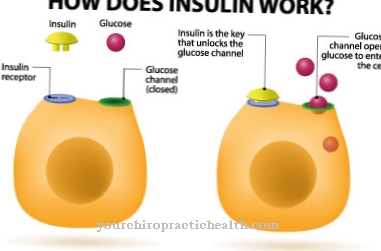
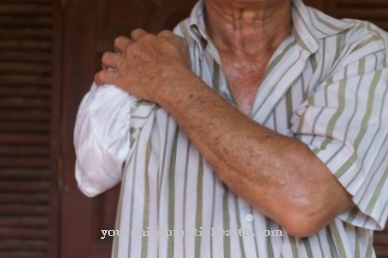
.jpg)
